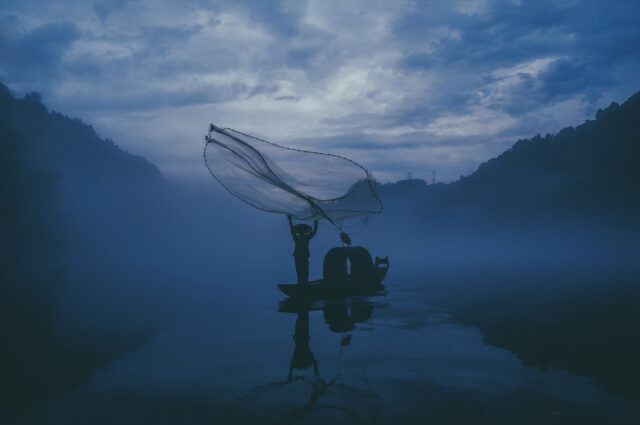
When you’re in a situation where you need to catch a fish to provide sustenance for survival, there’s no room for mistakes. In these circumstances, you’re not just fishing for sport or a trophy. You’re fishing for your life.
Here are seven survival fishing tips and techniques from Huk Gear for when you are in the direst of situations and have to hook, net, or spear a fish.
1. Carry the Right Equipment
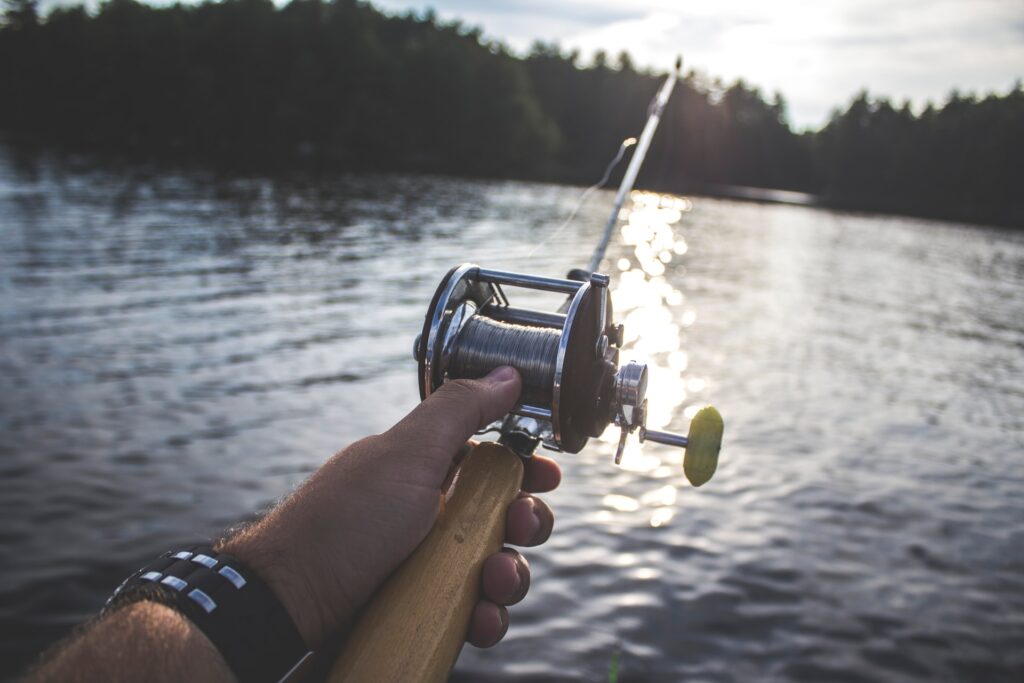
If you’re in a situation dire enough to require fishing for sustenance, you’re probably out in the backcountry. An excellent tip is to carry an emergency fishing kit with you on any outdoor adventure. It could mean the difference between surviving or perishing.
Your kit should ideally contain a variety of hooks–large and small. If you’re high up in altitude, the fish will be smaller and so you will need smaller hooks to catch them. If you’re around sea level, the fish will grow to be bigger sizes and you can use larger hooks to catch them.
If you didn’t pack a kit, you can find a myriad of natural resources that you can fashion into a hook in a pinch. Fishbones, thorns, hardwood or discarded scrap metal can all be made into hooks.
2. Identify the Ideal Location

If you’re near a lake or a river, look for cover. Often, when you’re fishing for fun or sport, fishing in protection can be a hassle. The vegetation and brush can snag your lines, lures, and clothing, making it hard to cast.
But when you’re all about survival, cover can be your biggest asset. Not only does brush and vegetation obscure your location on the bank, but it also blocks out the sun, eradicating pesky shadows. Many fish prefer the security of leafy cover, so look for still pools with lily pads or water weeds.
3. Set Multiple Lines
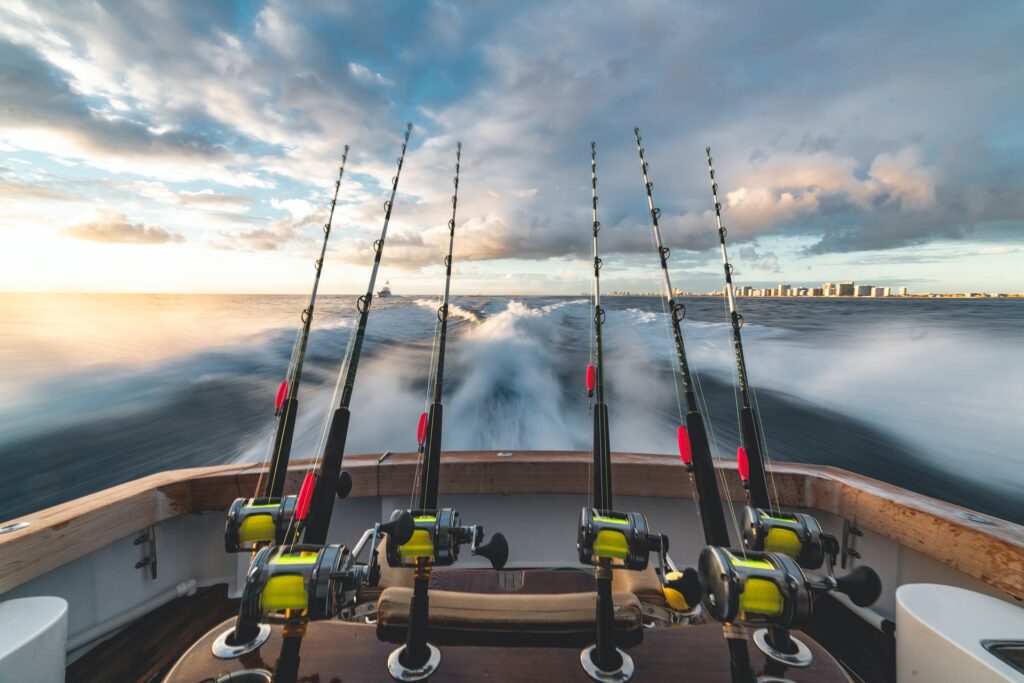
Although it is inadvisable to have multiple fishing poles in the water unattended, if you’re in a survival situation, it is wise to have many lines in the water at once. Even if you have 15 lines going at once, by tying each one to a branch, you increase your chances of a fish striking.
One excellent way to catch fish in a survival situation is to string a rope or slightly smaller line (not a fishing line) across a narrow part of a fast-moving stream or river. The current should be swift, but not fast enough to yank your lines off the rope.
From this, you hang multiple leaders with hooks, bait (if you have it), and a smallish weight. The hooks should submerge a couple of inches and then hold steady. The narrowness of the stream will funnel the fish toward your line of hooks.
Another way to set multiple lines is to use branches. Tie a line to each branch and attach your bait and hook to them. Keep the branches all in a row and situate them in cover for those fish who find security in vegetation.
Then, you can sit back and watch the branches. If any of them start to twitch in a manner that isn’t from the wind, you may have bagged yourself a meal.
4. Find Bait
You probably won’t be carrying around a lure in your emergency fishing kit, so you will need to find some bait. Deadfall is an excellent place to start looking. Break open a rotten log, exposing the soft innards and sift through the detritus to find grubs, worms, or beetles.
Ideally, forage for enough bugs and grubs to keep your multiple lines baited and ready. If you continuously have to look for bait, you may miss a hit on one of your lines.
You will have to find out what the fish are eating if you didn’t check the local bait shop before you left. If you have an assortment of bait, like worms, grubs, and beetles, set up a few lines in a row with worms, the next few with beetles, and so on. You can figure out what the fish like best. Just remember to keep track of what you used on which line.
5. Weave a Net
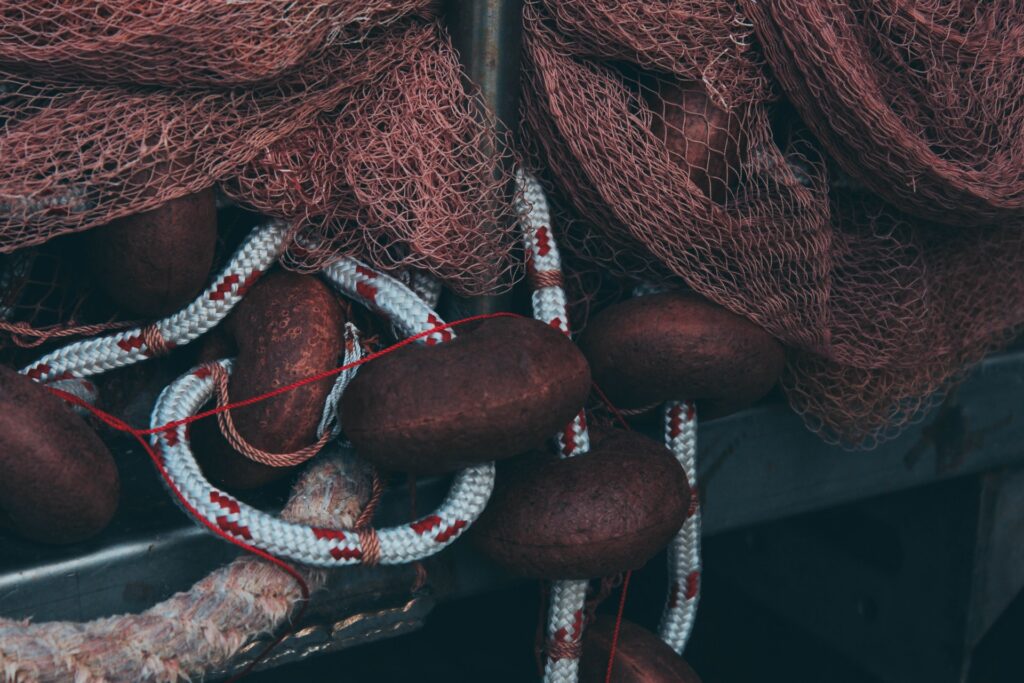
You can use strips of sapling bark to make yourself a net. Choose a tree that is young enough to have supple bark and pull it off in pieces. Then, tie strips to one long rope or a sturdier strip of bark and then weave a strip over and under them, continuing until you’ve created a woven checkerboard.
Then, cut a 4-foot length of the sapling, trim any branches or leaves and soak it in the water for at least an hour. Soaking will make the sapling more flexible. Once it is springy enough to bend, flex it to look like the letter “P” and tie it off with whatever material you have.
Then, tie the ends of the woven checkerboard to the bent sapling and you have a basic net.
6. Try Hand-Fishing
https://www.youtube.com/watch?v=cFVRsSQ7OTQ&ab_channel=SurvivalCooking
Hand-fishing is the most primitive technique out there, and to do it right, you’ll have to get wet and muddy. This is the method of fishing you’ll use if you have no gear at all. Essentially, you’re catching fish with your hands. If you have gloves, wear them to protect yourself from spiky fins, rough scales, and sharp teeth.
It’s easier to use this method of fishing in clear water, but you can achieve your goal in murky waters as well. It’s just more difficult that way. If you see holes or hollow logs, they might be hiding some catfish. Block one end of the log with one hand and then reach in and grab the fish.
If you can’t see any viable hidey-hole in your area, you can find fish in cover or other largely undisturbed areas. Stay perfectly still until you see the shadow of a fish and then lunge.
If you catch a fish using this method, the best course of action is to throw it immediately up on shore. Many fish are lost due to the fish’s slippery skin. Getting it on land as quickly as possible helps ensure you will eat your catch–not watch it swim away.
7. Fish with a Spear
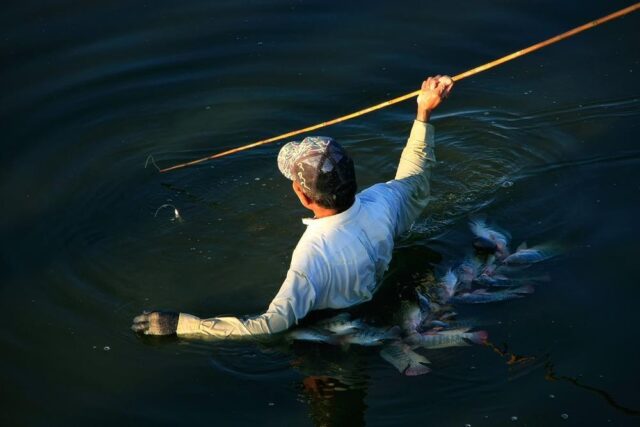
Most people use a speargun to go spearfishing. However, if you’re in survival mode and don’t have the proper fishing gear, you may need to improvise.
You can use your knife or ax to cut down a small sapling, the straightest one you can find. Strip off any branches or leaves to make it smooth. For the point, put one end into a fire to char it and then hack off the charred bits to slowly form a point.
Fishing with this method takes patience and stillness. You must hover over the water without moving until you see the telltale shadow of a fish. Then, you strike as quickly as you can, taking into account the refraction of the water by aiming a little lower than the fish itself. You can check here for more tips: https://outdoorcommand.com/learning-how-to-fish-a-handbook/.
A Fundamental Skill That Can Save Your Life
Fishing for sport is a lot different than fishing for survival. Hopefully, you thought ahead and prepared a small emergency fishing kit to take on your trip. If not, you can improvise using saplings to make spears or nets and using multiple lines to increase your chances of getting a hit.
Fish can sustain a person for a long time. As the old saying goes, “Give a man a fish, he eats for a day. Teach a man to fish, he feeds himself for many meals.” Your fishing skills may be the thing that gets you through when you’re in a survival situation.







